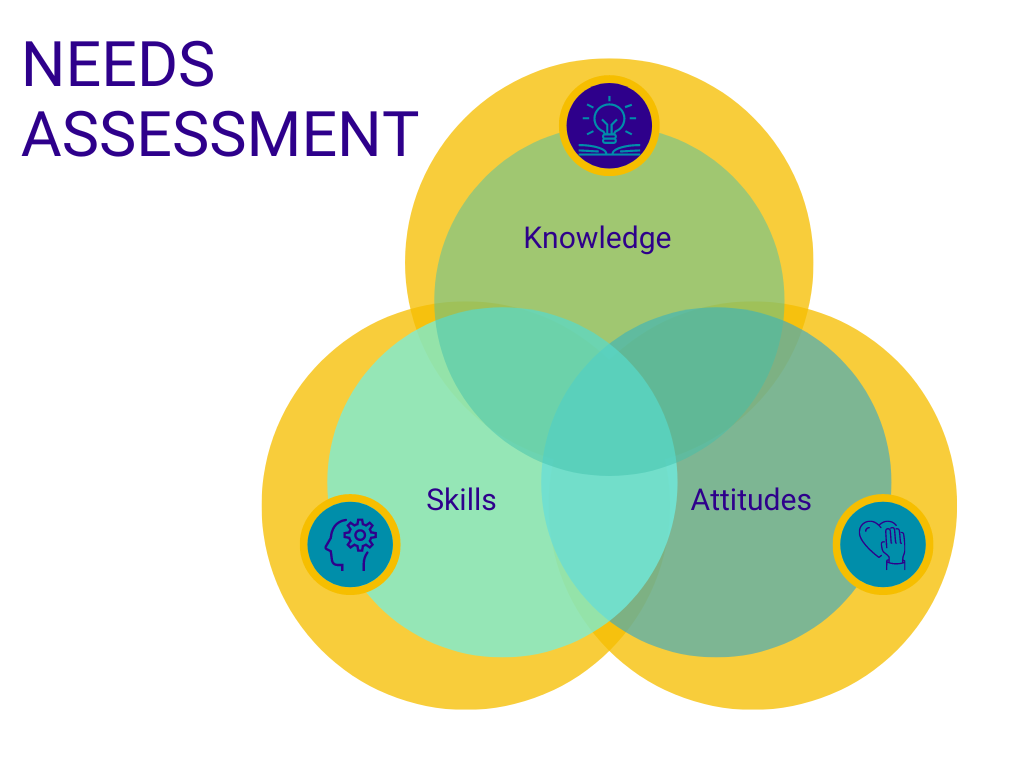The challenges present in healthcare are ever-evolving. People leaders must respond to changing science and technology, patient needs, and public health crises. The development of a meaningful training program and strategy is linked to employee retention, competence, reduced burnout, and patient care. How do we make learning and growth happen?
Healthcare Training: An Extraordinary Opportunity
There’s an extraordinary opportunity for training to make positive change in reducing patient deaths, improving employee safety and well-being in addition to retention, while also increasing patient quality care, and fiscal savings.
Reducing Patient Deaths
There are an estimated 250,000 deaths from medical errors annually – with preventable medical errors affecting as many as one in three hospital admissions. To put this into context this makes medical errors the third leading cause of death for adults.
Fatal medical errors encompass scenarios where patients were administered medications they had an allergy to or succumbed to preventable infections, among various other potential situations. It's not always doctors or nurses at fault, as experts suggest that even a faulty computer program could be the cause.
“Medical care has become really complex,” said Dr. David Classen, an associate professor of medicine at the University of Utah. “It’s no longer one single physician taking care of a single person at a hospital. It’s these huge groups of people now, and mistakes get made.”
Closing Gaps in the Patient Experience
Building a positive patient experience has the power to increase the quality and continuity of our care. Negative experiences, or gaps in care, contribute to confused and unmotivated patients unlikely to return. This represents a tremendous opportunity to transform patient care and outcomes through how we hire, develop, and retain healthcare teams.
- Frontline caregiver turnover can exceed 100 percent – with recent estimates of Medical Assistant turnover exceeding 50 percent. Caregivers staying within the occupation or organization but changing specialties or locations adds to these costs. There’s new focus on the need for leadership and soft skill training to tackle the barriers to retaining employees, building meaningful careers, and reducing the safety risk and cost of high turnover.
- Further, from a financial perspective, patients who are dissatisfied with their care are unlikely to refer others. In fact, peer reviewed research suggests that just one nurse with a poor attitude can cost an Emergency Department over $250,000 in lost revenues.
- Training can also reduce claims and improve bond ratings. Programs that improve the patient experience, safety, and connected care can increase patient satisfaction scores positively influencing bond ratings and loan interest savings.
- Strong training programs reduce the likelihood of legal claims and financial reserves set aside for lawsuits.
Complex Problems Require Planful Needs Assessment Before Training
These aren’t simple challenges. On top of medical errors, mitigating turnover, and service delivery, the science and practice of healthcare is ever evolving, and involves distinct professions and roles, ranging from frontline caregivers and allied healthcare professionals to nurses and physicians.

While training is a powerful solution, you may feel overwhelmed with where to start and how to build a training program that drives results for all affected caregiving employee groups. That’s why we’re focusing on needs assessment: using data to accurately scope out challenges and training requirements and the knowledge, skills, and abilities needed by an organization’s workforce to achieve the requirements.
Training Needs Assessment for Healthcare: Step-by-Step
An effective training needs assessment will help direct resources to areas of greatest demand. Continue reading to learn how to efficiently understand gaps in knowledge, skills, and attitudes, and the requirements your team needs for training to reach your intended results. Following this review, we’ve created a simple Excel-based checklist you can edit to guide you through the needs assessment process.
- Define the training goals.
Before conducting any needs assessment, it is important to clearly define the goals of the training. What skills or knowledge are you hoping to impart? What specific outcomes do you want to achieve? - Identify the target audience.
Once you have defined your training goals, you need to identify the target audience for the training. Are you training nurses, doctors, or other healthcare professionals? Are you targeting a specific department or specialty? - Assess the current knowledge, skills, attitudes and mindsets of the target audience.
To assess the training needs of your target audience, gather data on what they already know and what skills they already possess. This can be done through surveys, focus groups, or interviews. See if there are existing sources of data you can use. Exit interviews, for example, may include feedback on how skills, attitudes, and knowledge influence the decision to leave.

- Prioritize gaps in knowledge or skills.
Based on the data and feedback you just gathered, you can determine the core any gaps in knowledge or skills that need to be addressed through training. Which needs are most urgent and require immediate attention? Would it be helpful to break the training into phases with specific target areas for each?
If you're using assessments for hiring and promotion, this can be a powerful resource to understand the strengths and vulnerabilities of those you're training. - Build training content.
With information from the assessment process you can begin to build out the training content. Consider appointing content champions that maximize the influence, knowledge, and perspectives of exceptional subject matter experts. We often find a multi-disciplinary task force helpful to build ownership across all stakeholders influenced by the program you create. - Evaluate the effectiveness of the training.
After the training has been implemented, how will you evaluate results? Surveys, assessments, retention or promotion rates, or other feedback mechanisms can help and it’s useful to commit to a plan early.
One of the simplest ways to measure training effectiveness is through pre- and post-training assessments. Before the training begins, administer a test or survey to gauge participants’ knowledge or skills. After the training, give the same or a similar assessment. Comparing the results can show how much participants have learned.
Before beginning your training program consider how you'll gather feedback from learners themselves. Especially in the early stages of launching a new training program, consider distributing surveys asking about their experiences. Questions can cover the relevance of the content, the effectiveness of the trainer, the applicability of the skills learned, and even what concerns and obstacles they feel will make applying this content difficult. This qualitative data provides insights into how the training is perceived and areas for improvement.
Lastly, consider how you can observe participants in their work environment before and after the training. Look for changes in behavior that align with the training objectives. For example, if the training was on customer service, monitor interactions with customers to see if there are improvements in communication and problem-solving.
4. Performance Metrics
Track key performance indicators (KPIs) related to the training. For instance, if the training aimed to improve sales techniques, monitor sales figures before and after the training. Increased sales can indicate that the training was effective.
- Plan for transfer of training.
Reinforcement and support mechanisms should be put in place to help learners apply their new skills and knowledge on the job. This may include coaching, mentoring, or ongoing performance feedback. If a group of learners are completing a leadership development, or train the trainer program, side-by-side support, coaching, and follow-up support will help learners overcome initial hurdles of putting new skill into practice.
Overlooked barriers to transfer? The climate should support transfer of training by providing opportunities for learners to apply their new skills, recognizing and rewarding the use of new skills, and providing a culture of continuous learning and improvement.
- Consider the climate for transfer.
How favorable will the work environment be for trainees seeking to apply their new skills and mindsets post-training? If untrained employees, or not bought-in leaders, will present a barrier to trainee on-the-job transfer of training, a broader change management plan may be needed. There are five core factors that influence climate for transfer: opportunity to perform, supervisor and peer support, the strength of what was learned to your strategy and culture, and accountability. - Plan for individual differences.
Our past experiences, personality, values, knowledge, and innumerable other qualities affect how we learn. Consider gathering feedback on your training plan and materials from a variety of stakeholders that will be affected by the training. Ensure the training experience will be productive and inclusive experience for all employees – including people with disabilities, and a diverse workforce.
Assessments before, and after, training are often helpful to precisely understand individual differences and tailor the training experience. For example, an inclusion and belonging training program could be strengthened by understanding attitudes towards diversity and perceptions of past initiatives. This could guide how employees are placed in sessions. Validated assessments can also guide building diverse groups that maximize strengths, and differences, across members. - Nudge!
Unfortunately, on average, we forget over 90 percent of what we learn within a week. The good news? Small, realistic to implement nudges can spark behavior change and learning between trainings. What if you sent an email summarizing a new safety process to trainees a few days after the session? Or maximized a train-the-trainer approach by having trainers connect with trainees for short check-ins in the week following the training.
Another powerful nudge is positive reinforcement. Recognizing and rewarding progress, no matter how small, can motivate learners to continue their efforts. This can be done through badges, certificates, or public acknowledgment during and following learning. Positive reinforcement not only boosts morale but also reinforces the desired behavior, making it more likely to be repeated.
Social nudges leverage the influence of peers to encourage learning. For example, sharing success stories or testimonials from colleagues who have benefited from the training can inspire others to participate. Additionally, creating a sense of community through group activities or discussions can foster a supportive learning environment where individuals feel more motivated to engage and contribute.
Successful needs assessment tackles not just gaps in knowledge, but appraises all the barriers we may encounter with learning and behavior change. Need help making sense of everything we covered? We created a simple editable checklist to guide you through the needs assessment process that you can cut, paste, and build to tackle your unique challenges. Need a conversation?




